Home -- Contact Me -- Search Welchwrite.com -- Subscribe to AGN ![]()
Douglas' Events, Appearances and Seminar Calendar
Monday, March 30, 2009
Can New Media Save A Gardening Club?
 Image by imagebysp via Flickr
Image by imagebysp via Flickr
Reading about their difficulties in attracting new members, I immediately saw where New Media could assist them greatly in improving the visibility of the group and reaching out to new, younger, more digital members. Under the auspices of my group, New Media Interchange, I sent them a note offering to help them expand their New Media reach and pointed out a few ways to get started. I think this will be a great case study to cover for New Media Interchange that can show the methods and benefits New Media can offer any group.
I am waiting for a reply from the club, but I hope they are interested in working with me to expand the reach of their group and help it survive for many more decades.
Sunday, March 29, 2009
Compost harvest and vegetable bed prep
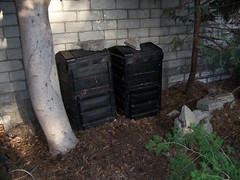
Composter #2 has more compost than I thought. I had opened the bottom door to check in it a few weeks ago, but it looked like it was still cooking. I needed to make some space in it for more kitchen scraps, though, so I started digging some from the thin layer at the bottom. I quickly found that the compost in the middle was completely ready and was hidden by a small covering of uncomposted leaves and such. I ended up with about 4 -5 cubic feet for the new bed. Cool!
I sifted this compost and then spread it on the new bed and used our new electric cultivator to give it all a good turn. The bed looks good and ready for us to do some shopping for seeds and transplants.
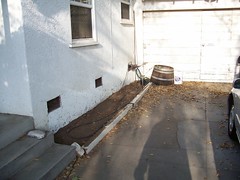
Labels: backyard garden, compost, garden, Gardening Tips, plant, Seed, Vegetable, Vegetable garden
Thursday, March 26, 2009
Time to find some shade vegetables
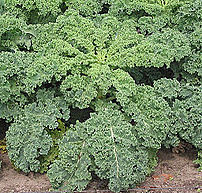 Image via Wikipedia
Image via Wikipedia
I am a fussy eater, so that could be a challenge, but after doing a bit of research on the Net I find that kale, oregano (I know, a spice, not a vegetable), broccoli, cauliflower and a few others might do OK here. I plan on pulling out the little electric cultivator and perhaps working in some more of our homemade compost.
I also plan on putting in some salad mixes. According to some sites, growing this in partial shade, especially here in the hot San Fernando Valley might help to keep the lettuce from bolting as the days start to heat up.
This little project will help me complete a long list of to-do items so I am looking forward to it. Too often, I can come to dread various gardening projects, but this one holds a lot of interest for me.
Here is my list of things to accomplish fairly soon, if not this weekend:
- Visit nursery for transplants and seeds
- Empty mature compost from both compost bins
- Work compost into the bed using electric cultivator
- Plants seeds and transplants
- Adjust/fix soaker irrigation system to minimize leaks
Labels: compost, garden, plant, San Fernando Valley, Vegetable
Wednesday, March 18, 2009
From my neighborhood walk today...Figs!
 I took my usual walk around the neighborhood today and was listening to the new podcast, The Typical Shutterbug Podcast, with my good friend, Victor Cajiao. Having iPhone in hand, it turned into a mini-photowalk.
I took my usual walk around the neighborhood today and was listening to the new podcast, The Typical Shutterbug Podcast, with my good friend, Victor Cajiao. Having iPhone in hand, it turned into a mini-photowalk.Victor is collecting some great interviews, tips, hints and advice from professional like Michael Freeman, author of The Photographer's Eye and amateurs like himself and his fellow listeners.
It is great to have a new source of inspiration to go out an shoot, even if it is only with the iPhone or point-and-shoot cameras. You don't need an expensive camera to think about composition, framing, exposure and more. These can be practiced with any equipment, even your own eye.
Saturday, March 14, 2009
Upcoming events from the Theodore Payne Native Plant Foundation
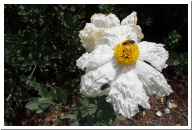 45 home gardens reveal the beauty of California native plants -and how to save water
45 home gardens reveal the beauty of California native plants -and how to save waterDiscover the beauty of California native plants and learn how to save water at the Theodore Payne Native Garden Tour on Saturday and Sunday, April 4 and 5, 2009 from 10 a.m. to 4 p.m. Admission is $20. To buy tickets or for information: visit www.theodorepayne.org/Tour/ or call (818) 768-1802.
Forty five home gardens throughout the Los Angeles Basin are featured, including Sherman Oaks, Encino, Sun Valley, Tujunga, North Hollywood Granada Hills, Woodland Hills, Culver City, Torrance, Hawthorne, Redondo Beach, Long Beach, Beverly Hills, Brentwood, Santa Monica, Topanga, La Canada Flintridge, Pasadena, South Pasadena, Altadena, Monrovia, Glendale, Echo Park, Eagle Rock, Highland Park and Atwater Village.
FREE LECTURE: Indulging Our Senses in the Native Garden
Saturday, April 4, 6:30pm - 8:30pm
Barnsdall Gallery Theatre, 4800 Hollywood Blvd., Hollywood 90027
Join Carol Bornstein, director of nursery operations and horticultural outreach at Santa Barbara Botanic Garden for an inspiring evening about gardening with natives. Discover the visual delights of gardening with natives, as well as the tactile, audio, olfactory and even gustatory pleasures! Ms. Bornstein is also the co-author of California Native Plants for the Garden! A book-signing follows the talk. The lecture, sponsored by the Theodore Payne Foundation for Wild Flowers and Native Plants, is held in conjunction with the organization?s annual native plant garden tour.
California Wildflower Hotline will bloom March to May 2008
Twenty-four hours a day, March 6 through May, anyone can call the hotline at Theodore Payne Wildflower Hotline at (818) 768-3533 or visit www.theodorepayne.org to find the best places to view wildflowers in Southern and Central California. The hotline message is narrated by Emmy Award-winning actor Joe Spano (Hill Street Blues, Apollo 13, NYPD Blue) and is updated every Thursday evening with new information on wildflower sites throughout Central and Southern California. The web site www.theodorepayne.org/hotline.html also features weekly reports covering the same areas. The site also provides web links to more than 50 flower-watching destinations and lists both the common and botanical name of each flower mentioned, and where and when it is blooming.
Saturday, March 07, 2009
Event: Count Butterflies at Debs Park! - March 28

Learn all about Butterflies at the Audubon Center at Debs Park!

Tim Bonebrake started volunteering with the Audubon Center at Debs Park about nine years ago when he was in high school. The Tujunga native helped monitor birds, reptiles and amphibians in Debs Park. Since then, he has studied parrots in Venezuela, and has received a degree in Environmental Sciences at UC Berkeley. More recently, Tim has been working towards his Ph.D. in Biology at Stanford University, studying butterflies in places like Mexico, Guatemala, El Salvador, and Costa Rica.
On March 6th at 7:00 pm, Tim will return to the Audubon Center to give a talk and slideshow about the unique diversity of butterfly life in the Mesoamerican tropics. He will also discuss some of the links and comparisons to our own butterfly communities here in the Los Angeles area. Both English and Spanish speakers are welcome and encouraged to attend.
Then, on March 21st, the Audubon Center will conduct its first Annual Butterfly Census in Debs Park. Volunteers are invited to drop by the Audubon Center, anytime between 9:00 am and 4:00 pm, to search the park to count the 13 known butterfly species that have been spotted within the park’s borders. No experience is needed. The Center will also host arts and crafts activities and Butterfly Story Time, which will be held at 10 am, 12 noon and 2 pm.
The Audubon Center at Debs Park is located at
4700 N. Griffin Avenue
Los Angeles, 90031.
Admission to the park is free.
Please visit the Audubon Center’s website http://ca.audubon.org/
The Audubon Center at Debs Park is celebrating its 5th Anniversary this year!
Friday, March 06, 2009
Elsewhere Online: 10 Perennials Easily Grown from Seed
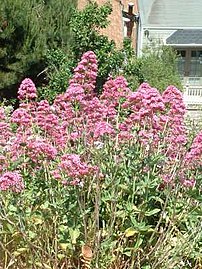 Image via Wikipedia
Image via Wikipedia
Do you have plant tips for dry shade? I am still looking for something to fill in my back woodland garden area. Even a ground cover would be nice. Leave your suggestions in the comments.
10 Perennials Easily Grown from SeedBecause this bunch is simple to start, you'll save money and get more plantsHome gardeners often assume that starting perennials from seed is more difficult than sowing annual flowers or vegetables, when, in fact, it is as easy to start a primrose as it was to germinate that bean in a cup back in grade school. Considering the many benefits of starting perennials from seed, it seems foolish not to do it. Seed is economical, and in short order, you can produce flats of plants that would cost hundreds of dollars to purchase retail, which is great if you have a large or new garden or are on a tight budget. Many plants must be grown from seed because they are otherwise unobtainable or difficult to propagate any other way, and seedlings often establish better than large plants. I am more willing to experiment and less apt to rue plant losses when I know I have an inexpensive, ready source available. Abundant supply also means there are plants to spare and to share.
Wednesday, March 04, 2009
California poppies in a vacant lot
This lot has remained empty for years, despite its location on a busy corner in Sherman Oaks. What a change it would be to have a park grow here instead of another gas station or mini-mart.
I can dream, if nothing else.
Elsewhere Online: Indoor Gardening Projects for Kids
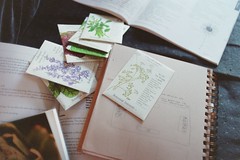 Image by cafemama via Flickr
Image by cafemama via Flickr
Read: The Seeds of Time
Indoor Gardening Projects for KidsWhen I was a tiny child, I remember proudly bringing home a paper cup full of dirt and bean seeds.
I would watch anxiously for the first peep of the stem pushing through the soil.
Years later, I still enjoy watching new plants grow.
Gardening can teach children so many skills. They learn about science, patience, math and more. You don’t have to wait until summer, either. There are many gardening projects that can be started indoors year-round - especially inviting in the bleak winter months.
Read the entire article
Labels: backyard garden, Bean, garden, Home, plant, Seed, Soil, Vegetable garden

![Reblog this post [with Zemanta]](http://img.zemanta.com/reblog_e.png?x-id=972c660d-2b67-4239-adbb-54ffcea317da)
![Reblog this post [with Zemanta]](http://img.zemanta.com/reblog_e.png?x-id=a5198b02-7e26-4b16-8eec-4b7d6a457ed7)
![Reblog this post [with Zemanta]](http://img.zemanta.com/reblog_e.png?x-id=6a4736e3-33f0-4c99-9c45-100344ce2076)
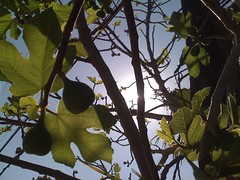

![Reblog this post [with Zemanta]](http://img.zemanta.com/reblog_e.png?x-id=9e5f5906-5d35-4591-bb08-2ccb67e2ecbf)
![Reblog this post [with Zemanta]](http://img.zemanta.com/reblog_e.png?x-id=89ed8a80-a800-43b3-9dbc-e5f6b12807b6)

![Reblog this post [with Zemanta]](http://img.zemanta.com/reblog_e.png?x-id=cdd23d09-05ad-4e8d-86b5-07843c8c71eb)


